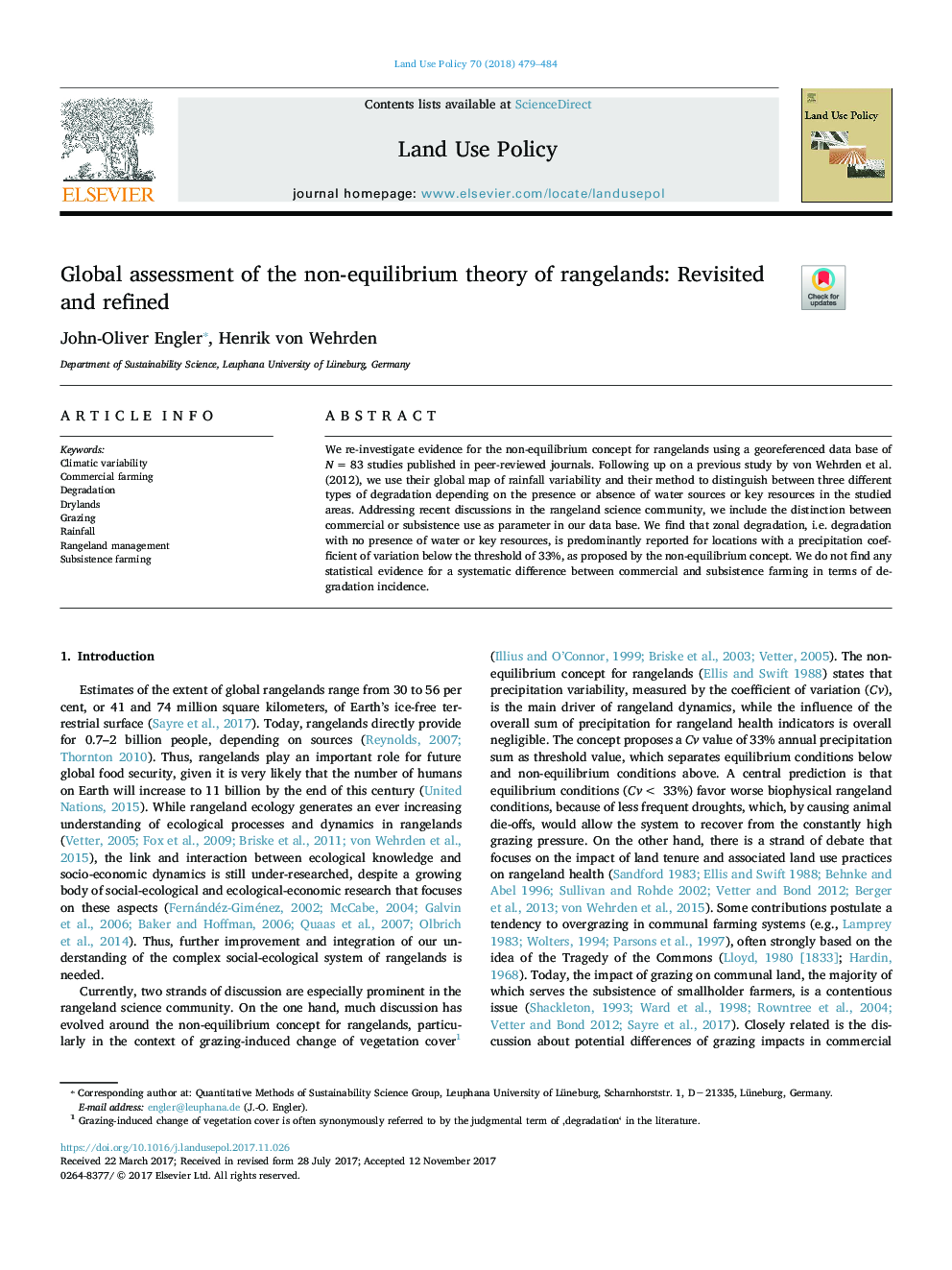| Article ID | Journal | Published Year | Pages | File Type |
|---|---|---|---|---|
| 6546794 | Land Use Policy | 2018 | 6 Pages |
Abstract
We re-investigate evidence for the non-equilibrium concept for rangelands using a georeferenced data base of NÂ =Â 83 studies published in peer-reviewed journals. Following up on a previous study by von Wehrden et al. (2012), we use their global map of rainfall variability and their method to distinguish between three different types of degradation depending on the presence or absence of water sources or key resources in the studied areas. Addressing recent discussions in the rangeland science community, we include the distinction between commercial or subsistence use as parameter in our data base. We find that zonal degradation, i.e. degradation with no presence of water or key resources, is predominantly reported for locations with a precipitation coefficient of variation below the threshold of 33%, as proposed by the non-equilibrium concept. We do not find any statistical evidence for a systematic difference between commercial and subsistence farming in terms of degradation incidence.
Keywords
Related Topics
Life Sciences
Agricultural and Biological Sciences
Forestry
Authors
John-Oliver Engler, Henrik von Wehrden,
